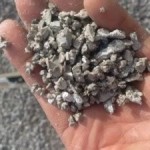Sand Bedding Construction: A Foundation for Stability and Durability
Sand bedding, a crucial foundation component in various construction projects, provides stability, drainage, and support to structures like pavements, walkways, and patios. Understanding the essential aspects of sand bedding construction is paramount for ensuring optimal performance and longevity.
Site Preparation and Compaction
Prior to installing the sand bedding, the site must be adequately prepared. This involves clearing the area of debris and vegetation, followed by excavating the soil to the desired depth. The base layer should be compacted using a plate compactor or similar equipment to create a firm and stable surface.
Material Selection and Placement
The sand used for bedding should meet specific requirements. It should be clean, well-graded, and have a minimum California Bearing Ratio (CBR) of 15%. The sand is spread over the compacted base layer and leveled to the desired thickness, typically ranging from 4 to 6 inches.
Moisture Control
Moisture control is essential in sand bedding construction. The sand should be slightly moist but not saturated. Too much water can weaken the sand and reduce its load-bearing capacity, while too little moisture can make it difficult to compact properly.
Compaction and Leveling
After the sand bedding is placed, it needs to be compacted to achieve the desired density and stability. This is typically done using a plate compactor or vibratory roller. The sand should be compacted in multiple passes, each pass overlapping the previous one to ensure uniform density throughout the bedding layer.
Finishing and Final Preparation
Once the sand bedding is compacted, it should be leveled and shaped to create a smooth and uniform surface. Any excess sand should be removed, and the bedding should be allowed to settle for a short period before the next layer of construction is placed.
Additional Considerations
In addition to the essential aspects outlined above, other factors should be considered for optimal sand bedding construction:
- Geotextile Layer: A geotextile layer can be placed between the base layer and the sand bedding to prevent contamination and enhance drainage.
- Slopes and Transitions: Sand bedding slopes should be properly graded to ensure proper drainage and prevent erosion.
- Weather Conditions: Sand bedding construction should be performed under favorable weather conditions, avoiding excessive moisture or freezing temperatures.
Conclusion
Sand bedding construction is a fundamental aspect of various construction projects, providing stability, drainage, and support to structures. By following these essential aspects, contractors can ensure the longevity and performance of their projects. Proper site preparation, material selection, moisture control, compaction, leveling, and additional considerations contribute to the creation of a solid and reliable foundation.

Sand Bedding Construction Haul 4 U

Bedding Sand Acme Gravel

Construction Backfill And Bedding Sand Northridge

Sand Bedding Construction Haul 4 U

Bedding Sand Acme Gravel

Construction Backfill And Bedding Sand Northridge

Types Of Sand Used In Construction Projects

Sand Bedding Coastallandscapesupplies

What Is Bedding Sand It Used For Visit Wellers Hill Hardware

Brown Pipeline Bedding Sand Packaging Size Tonnage Lorry Tipper
Related Posts








